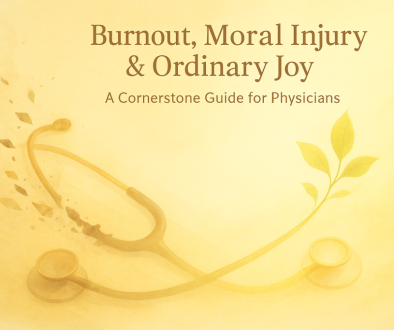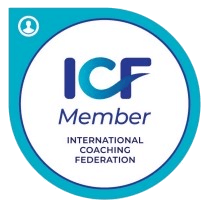Exploring Diverse Clinical Careers: A Guide for Physicians
A Nostalgic Look at the Traditional Family Doctor
During my childhood, I saw a good, old-fashioned family doctor, Dr. Wiedemeyer. Dr. Wiedemeyer worked closely with his dedicated nurse, Dolores. I clearly remember sitting in his waiting room on those sticky vinyl chairs, surrounded by dark wood-paneled walls. The air always had a sharp, clean smell of antiseptic, which I still associate with healthcare. Dr. Wiedemeyer was a vital part of our family. He delivered all six of my siblings. He knew us each by name, remembered our hobbies, and was the only person who tried to talk me out of becoming a doctor.
When I started medical school, I initially dreamed of having a practice like his. However, as I gained more experience, my interests shifted from family medicine to pediatric cardiology. Still, in my heart, when I think of the perfect doctor, I always picture Dr. Wiedemeyer, his nurse Dolores, and that familiar waiting room.
The Changing Landscape of Medicine
Sadly, practices like Dr. Wiedemeyer’s are nearly gone. As of January 2024, 77.6% of all physicians in the United States are employed, with 55.1% employed by health systems and 22.5% by corporate entities. Between 2012 and 2022, the share of physicians working in private practices dropped by 13 percentage points, from 60.1% to just 46.7%.
As healthcare changes, physicians need to evolve with it. The leading causes of burnout are administrative burden and lack of autonomy, which interestingly parallel the drop in physician practice ownership. If you’re a physician contemplating your future, this article explores different clinical practice models, including self-employment, academic medicine, multispecialty practice, concierge medicine, telemedicine, and locum tenens. Each has its own pros and cons, and you may discover a practice model that resonates with your values and lifestyle.
Clinical Practice Models
1. Self-Employment: The Indie Physician
Self-employment, often encapsulated in the term “private practice,” remains a time-honored route for many physicians. For those who are entrepreneurial, have strong business acumen, and prefer to steer their own ship, this model offers the freedom to create a practice that reflects their philosophy of care.
- Pros:
- Independence: You decide on scheduling, patient selection, and the type of medicine you want to practice.
- Connection: Building long-term relationships with patients, which can be gratifying.
- Cons:
- Business Management: You’ll need to handle (or hire out) the administrative side, including billing, marketing, and maintaining compliance with regulations.
- Financial Risks: It can take time to build a patient base, and overhead costs can be a challenge.
- Insurance Contracts
- Call Coverage
- Takeaway:
If you relish autonomy and are ready to embrace the responsibilities of operating your practice, self-employment may be the ideal path for you.
2. Clinical Careers in Academic Medicine: Where Knowledge Meets Practice
Academic medicine provides a fulfilling route for physicians who love teaching and research. Physicians who work in academics engage in clinical practice while also training the next generation of healthcare providers. Many academic physicians also have research interests or work to develop clinical programs within their institutions.
- Pros:
- Mentorship and Influence: Shape young minds and influence the future of healthcare.
- Intellectual Engagement: Opportunities to engage with research and stay at the forefront of medical advancements.
- Cons:
- Bureaucratic Constraints: Working within an academic institution’s bureaucracy can limit creativity.
- Potentially Lower Compensation: Salaries in academic settings may often be lower than in private practice.
- Takeaway:
If you’re passionate about education, advancing medical knowledge while providing patient care, or research academic medicine could align beautifully with your goals.
3. Multispecialty Practice: Collaboration is Key
In a multispecialty practice, physicians from various fields collaborate under one roof, delivering comprehensive care to patients. This model capitalizes on shared resources and expertise, allowing for holistic patient management.
- Pros:
- Team Approach:Collaboration with peers can enhance patient care and offer diverse perspectives on complex cases.
- Shared Resources: Administrative efficiency, spurring innovation in patient care.
- Cons:
- Potential for Conflicts: Differences in practice styles among specialists can lead to friction.
- Limited Autonomy: Individual physicians may have less control over specific treatment approaches.
- Takeaway:
If you value teamwork and comprehensive care, consider multispecialty practice as a compelling option for your medical career.
4. Concierge Medicine: A Personalized Approach
Conierge medicine is an innovative model focused on personalized care. Physicians who practice in this realm often charge retainer fees, allowing for a limited patient roster and, thus, more time spent with each individual.
- Pros:
- Enhanced Patient Relationships: With fewer patients, there’s more time for personalized care.
- Access and Responsiveness: Patients frequently enjoy shorter wait times and increased availability of their physician.
- Cons:
- High Costs for Patients: The retainer fees may be prohibitive for some, leading to limited access.
- Small Patient Pool: Fewer patients can lead to financial instability if not managed correctly.
- Takeaway:
Concierge medicine might be your calling if you aspire to provide personalized, high-touch care and are comfortable navigating a different financial landscape.
5. Telemedicine: Revolutionizing Patient Access
Telemedicine has become increasingly popular, especially in recent years. This model uses technology to deliver care remotely, offering convenience to both patients and physicians.
- Pros:
- Convenience: Patients can consult with their doctors from the comfort of their homes.
- Flexibility: Physicians can manage their schedule more readily and reach rural or underserved populations.
- Cons:
- Technology Dependence: Requires a strong comfort level with technology and online platforms.
- Limited Physical Exam: In some cases, the inability to perform physical examinations can hinder diagnosis.
- Takeaway:
If you’re tech-savvy and interested in accessibility in healthcare, telemedicine can offer a dynamic and timely way to connect with patients.
6. Locum Tenens: A Flexible Solution
For those who enjoy variety and exploring new environments, locum tenens might be the perfect fit. This model allows physicians to fill temporary positions in various healthcare settings, both locally and abroad.
- Pros:
- Flexibility: Pick and choose assignments that fit your lifestyle, schedule, and location preferences.
- Exposure: Experience diverse clinical environments and meet different patient populations.
- Cons:
- Lack of Stability: Inconsistent income and benefits may be challenging for some physicians.
- Familiarity with Systems: Constantly adapting to new systems and protocols can be demanding.
- Takeaway:
Locum Tenens offers an exciting pathway to practice medicine while embracing new experiences if you value flexibility and adventure alongside your medical career.
Your Clinical Career Awaits
The different types of clinical careers reflect the diverse strengths, values, and lifestyles of physicians today. Whether you envision yourself running your own private practice, nurturing the next generation of doctors through academic medicine, or embracing the hustle of locum tenens, there’s a place for you in this dynamic landscape.
Understanding your priorities—independence, collaboration, personal connection, or innovative technology—will help you identify the model that best aligns with your vision for a fulfilling medical career.
As the healthcare landscape continues to evolve, so too can your clinical careers. Embrace the journey, explore your options, and ultimately, choose the career path that resonates with your unique identity as a physician. Your contributions to clinical care will shape the future of medicine—whatever avenue you decide to take.
In my journey, after much soul-searching and reflection, I realized that reducing my workload to 0.8 full-time equivalent (FTE) was the best solution for me. By working fewer hours and having more time for self-care, family, and hobbies, I was able to rediscover my passion for medicine and avoid burnout.
Remember that there is no one-size-fits-all solution to job satisfaction and well-being.
Sometimes, the answer may not lie in doing different work but rather in working differently.
By exploring alternative clinical careers and finding the right balance for your individual needs, you can adapt to the changing tides of medicine and continue to provide the high-quality, compassionate care that drew you to this noble profession in the first place.





